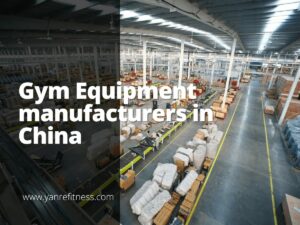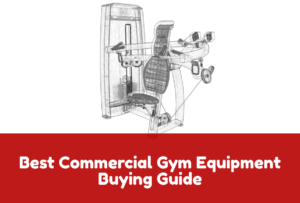Years ago, before I opened my gym, I spent an entire night online looking for one answer: “Should I buy a treadmill or a rowing machine?”
I read blogs. I watched videos. I still wasn’t sure.
Now, after owning a gym for years, I’ve used both machines with my clients every single day. I’ve seen what works. What breaks. What burns calories without burning out your body.
That’s why I wrote this guide. Because if you’re like I was, you don’t want vague answers. You want clear facts.
We’ll cover performance, impact, space requirements, and how each one support your business goals!
By the end, you’ll have the clarity I wish I had that night.
Let’s dive in!
1. What is a Rowing Machine?
When I first added a rowing machine to my gym floor, I wasn’t sure how members would react. But it didn’t take long to see the results. They were sweating. Breathing hard. Engaged from start to finish. And many kept coming back to it—a true testament to the difference quality equipment from a reliable commercial gym equipment manufacturer can make in member satisfaction and retention.
A rowing machine simulates the movement of rowing a boat. But it’s not just an upper-body pull. It’s a full-body movement. Your members push with their legs, pull with their back and arms, and stay tight through the core.
Resistance Mechanisms
Rowers come in a few types, depending on how resistance is created:
- Air: The harder the pull, the more resistance gets.
- Magnetic: Quieter. Can set resistance levels manually.
- Water: Feels most like rowing in a real boat. Resistance rises with effort.
- Hydraulic: Often compact, but with limited range and feel.
Target Users
So, who’s the rower for?
- Functional fitness athletes
- Members in HIIT classes
- Anyone wanting low-impact, full-body cardio
If your members need a break from high-impact cardio—but still want something that pushes them—rowing is a great solution.
It’s challenging without being harsh on joints. And it offers variety in any gym setting.
A rowing machine can transform your cardio zone into a versatile, results-driven space that members love. YR Fitness manufactures commercial-grade rowers engineered for durability, smooth resistance, and lasting performance. Talk to us about bringing this powerhouse machine to your facility.
2. What is a Treadmill?
I’ll be honest, in my gym, the treadmill is often the first machine members step on. It feels safe. It’s familiar. And most people already know how to use it. Just press start and go.
Treadmills simulate walking, jogging, or running. That makes them one of the most used cardio tools—not just in gyms, but also in rehab clinics and training studios.
Incline & Speed Variations
Today’s treadmills are more advanced than ever. Most come with motorized incline and speed settings, giving your members more ways to challenge themselves.
- Incline: Most machines range from 0% to 15% or higher. That simulates hill climbs and engages more lower-body muscles.
- Speed: They usually go from 0.5 mph to 12 mph or more. That covers everything from a slow walk to a fast sprint.
I’ve seen clients walk, power-hike, and sprint—all on the same machine. It adapts to their goals on the spot.
Target Users
A treadmill works for nearly everyone:
- Beginners just getting active
- Advanced runners doing interval training
- Rehab clients needing low-impact walking options
If your gym serves a wide variety of people, having a treadmill—or a few—is usually a smart move. But for older adults or rehab clients, you might also compare recumbent vs upright bikes for even more comfort-focused options. They’re easy to understand, easy to program, and reliable for structured training.
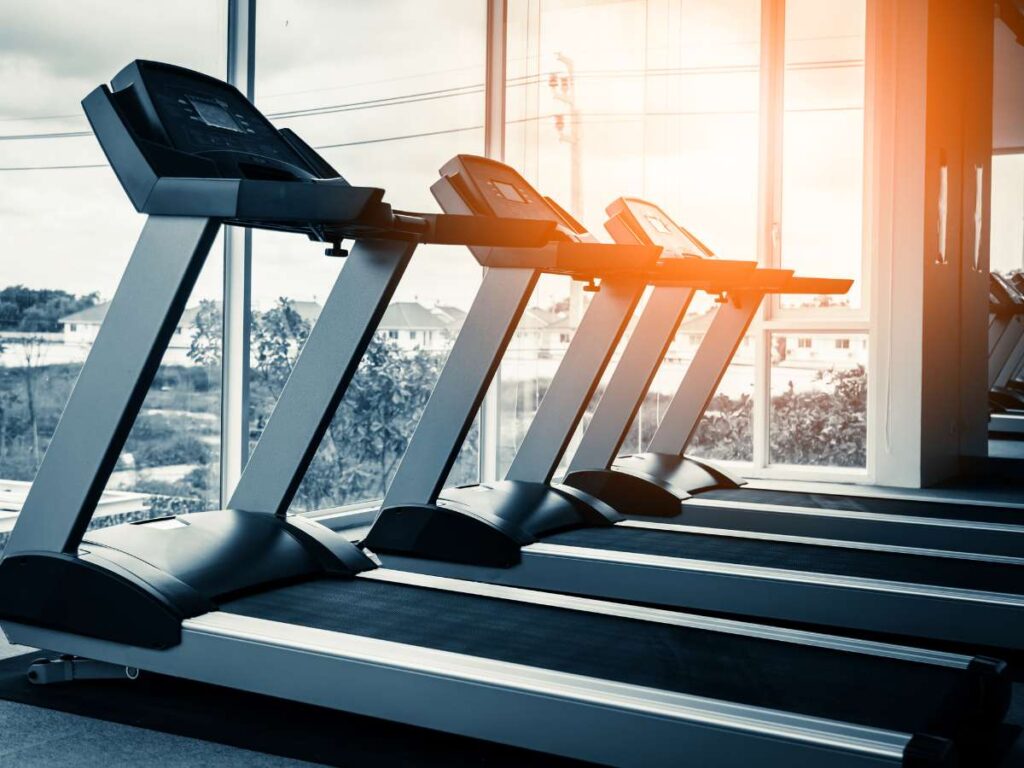
A treadmill remains a gym staple for good reason—it’s versatile, user-friendly, and fits every fitness level. YR Fitness builds commercial-grade treadmills engineered for durability, smooth operation, and advanced features members expect. Talk to us about elevating your cardio zone with treadmills built to last.
3. Usage Capabilities
Over the years, it’s been clear—members don’t just care about machines. They care about results. Some want fat loss. Others need low impact. A few just want to sweat and leave.
When comparing rowing machines and treadmills, the way each one performs really matters. From calories burned to joint impact, both machines have strengths worth considering.
Calorie Burn Comparison
Calorie output isn’t just about speed—it’s about how the body moves.
- Treadmills tend to burn more calories per minute during running workouts. Sprint intervals and high inclines push output even higher.
- Rowers offer strong calorie burn too, especially in full-body HIIT or endurance rows. The difference? Less joint strain.
This makes the rower a strong option for members who want intensity without pounding their knees.
Muscle Activation
Rowers engage more muscles in each session:
- Legs
- Core
- Back
- Arms
Over 80% of the body is moving with every pull.
Treadmills target mostly the lower body and heart-lung system. Great for building cardio base, but not much upper-body activation.
Low Impact vs High Impact
Rowing is low impact. Members with bad knees or past injuries often prefer it.
It gives them intensity without pain.
Treadmills can be high impact—especially during runs. The pounding adds up over time, which can be hard on older adults or those recovering from joint issues.
Versatility
Rowers are efficient. They blend cardio and strength in one machine. Perfect for group circuits or hybrid training.
Treadmills are versatile too. They support:
- Walking
- Jogging
- Sprinting
- Incline training
- LISS and HIIT formats
Both machines have clear benefits. Matching those benefits with member needs is where the real value comes in.
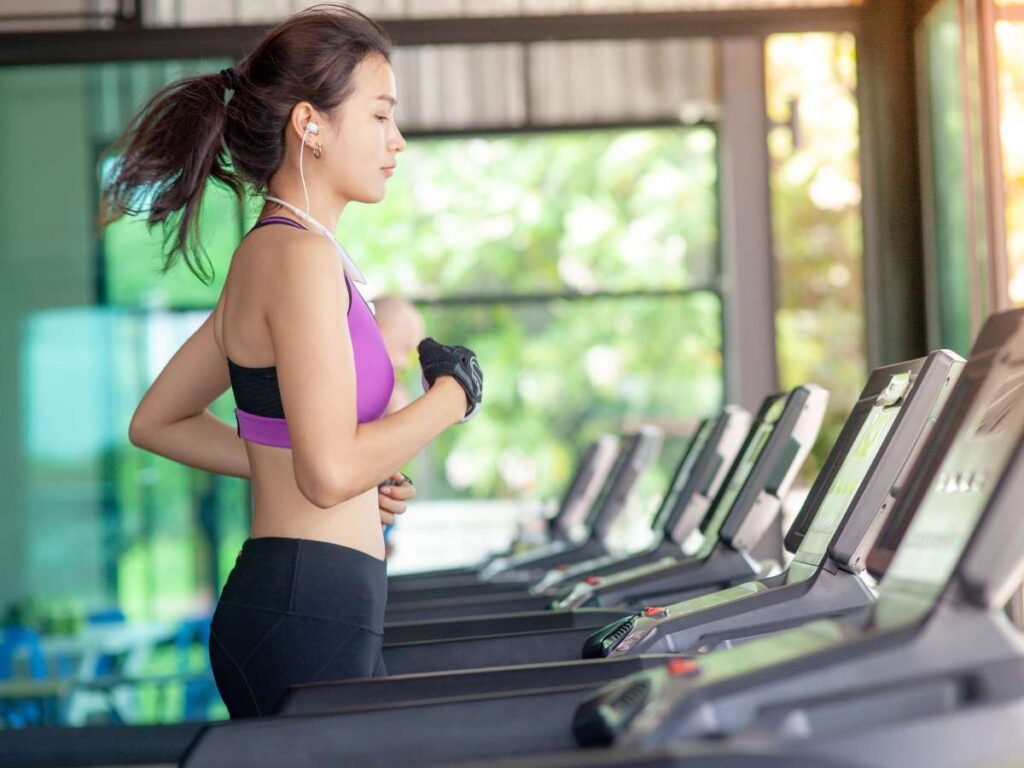
Rowers offer full-body training without joint strain, while treadmills deliver versatile cardio for every fitness level. Choose the right mix for your members’ goals—and count on YR Fitness for commercial-grade machines that keep your cardio zone performing at its best. Contact us to equip your space with confidence.
4. Programming and Class Integration
Some machines stay busy all day. Others get skipped over. I’ve seen it happen. It usually comes down to how well a machine fits the program—not just how it looks on the floor.
Treadmills and rowers can both work in group settings, but they serve different purposes. The key is matching them to the class flow.
Group Training Compatibility
Rowers work well in fast-paced, full-body sessions. Easy to use. Easy to coach. Great for variety.
- HIIT Rounds: Rowers respond quickly to speed and power changes, which makes them ideal for short bursts of effort.
- Bootcamp Flows: Rowers are simple to drop into stations. Members can row hard for 30–60 seconds, then rotate.
- Functional Cardio Stations: Rowers add variety to circuits with low-impact, high-output work that challenges multiple muscle groups.
Treadmills play a different role in programming. They’re steady, structured, and cardio-focused.
- Treadmill Bootcamps: Great for controlled intervals and incline training. Members stay on one station and adjust speed or incline.
- Speed Drills: Useful for sprint intervals or pace-based progressions, especially for more advanced runners.
- Running-Focused Sessions: Ideal for members training for distance goals, using steady-state cardio or long intervals.
Preloaded Program Options
Programs built into the machine can help keep members engaged, even when a trainer isn’t nearby.
Rowing machines typically offer:
- Stroke Rate Tracking: Shows how fast the user is rowing, which helps control pace and form.
- Split Times: Displays how long it takes to row 500 meters—useful for interval goals.
- Power Output Feedback: Gives real-time data on performance, keeping members focused and competitive.
Treadmills usually feature:
- Virtual Runs: Interactive screens that simulate outdoor routes, adding interest to steady cardio sessions.
- Fat-Burn Modes: Pre-set programs that adjust speed and incline to keep users in a target heart rate zone.
- Interval & Incline Workouts: Great for building stamina or adding variety without manual input.
Trainer-Led Options
In my experience, trainers tend to favor rowers during group formats. Here’s why:
- Easy to cue pace and power
- Quick to reset between rounds
- Offers total-body activation without needing much floor space
Treadmills work well too—but are better suited to longer efforts. They take more time to adjust and offer less variety in upper-body movement.
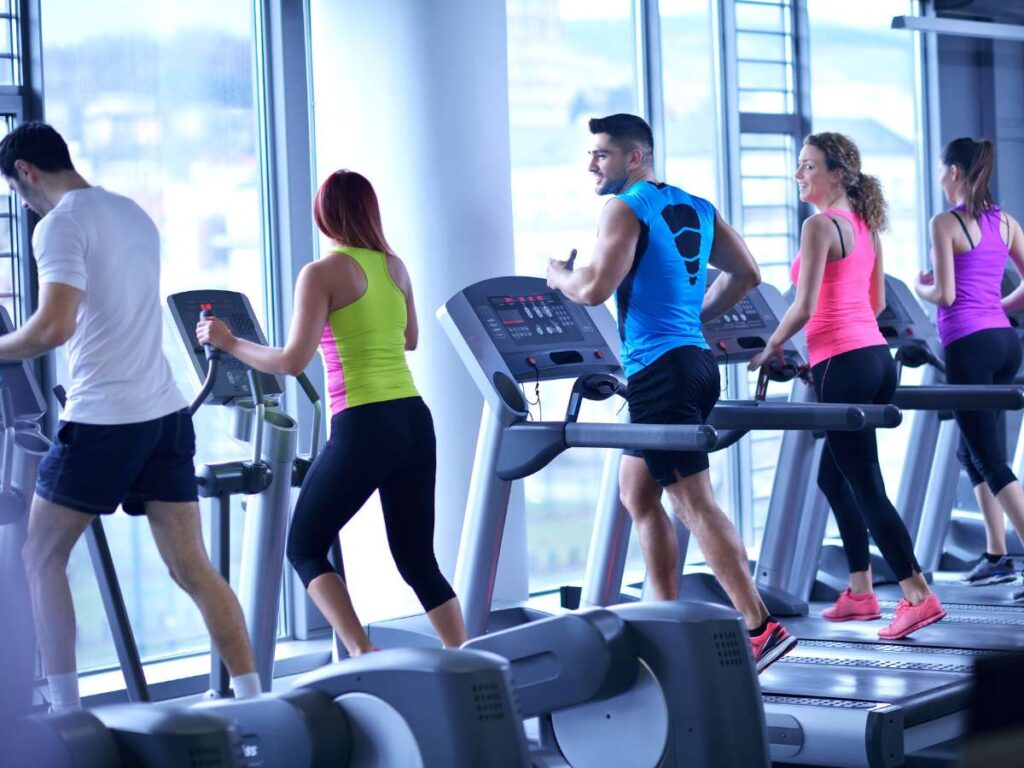
Ready to level up your classes with the perfect balance of rowers and treadmills? Contact us at YR Fitness and let’s build a floor plan that keeps your members moving.
5. Space and Layout Considerations
Fitting new machines into a floor plan isn’t always easy. I’ve had to shift things around more than once—just to make sure members had room to move. Both rowers and treadmills need their own space, but they impact the layout in different ways.
Footprint and Storage
Rowers are long—some can reach 8–9 feet when in use. But many models store vertically, which makes them easier to manage in smaller gyms.
Treadmills take up more space. They’re heavier, bulkier, and usually can’t be moved often. Once they’re placed, they tend to stay there.
- Rowers: Long but lightweight, easier to reposition
- Treadmills: Heavy and fixed, needs solid floors and dedicated outlets
Floor Zone Planning
Where a machine lives can change how well it gets used.
- Cardio Zone: Best for both machines. Allows members to focus and stay in rhythm.
- Group Fitness Area: Rowers fit better here due to mobility. Treadmills are harder to rearrange.
- Rehab Corners: Rowers work well for low-impact training.
Good air circulation helps both. Visibility matters too—people are more likely to use what they see.
Designing your gym for maximum flow and efficiency? Talk to us at YR Fitness—we’ll help you plan the perfect layout for rowers, treadmills, and every piece that keeps your members moving.
6. Operational Costs
Buying equipment is one thing—keeping it running is another. Here’s a side-by-side breakdown based on actual experience and industry averages.
Cost Factor | Rowing Machine | Treadmill |
Price Range (Commercial) | $900–$2,500 (air/magnetic models); $2,500+ (water models) | $2,000–$5,000+ (for motorized, commercial treadmills) |
Power Usage | Low or none (battery or manual for most models) | High—most use 120V or 220V outlets with constant draw |
Common Repairs | Strap, seat rollers, chain tension (low cost, less frequent) | Belts, motors, electronics (costlier and more frequent) |
Maintenance Needs | Wipe down, check resistance parts monthly | Weekly belt alignment, deck lubrication, electronics check |
Average Lifespan | 5–10 years with basic care | 4–8 years depending on use and maintenance |
Noise & Heat Output | Low—quiet operation; minimal heat | High—more noise during running; motor generates heat |
Bottom line? Rowers are more budget-friendly to operate long term. Treadmills require more upkeep and power—but may offer wider appeal depending on member use.
Want to balance performance and long-term costs in your gym? Contact us at YR Fitness, and let’s find the cardio equipment that fits your budget and keeps your facility running strong.
7. Maintenance and Durability
Over time, equipment shows its true cost. Some machines stay solid with basic care. Others demand constant repairs. Here’s what real-world use looks like.
Rowing Machines Maintenance
- Seat Rollers: Usually need replacing every 12–18 months. Easy fix with low downtime.
- Chain or Belt: Light oiling every 3–6 months keeps it running smooth.
- Foot Straps: Often wear out after 1–2 years, especially in high-use facilities.
- Console Batteries: Most models use AA batteries—simple annual replacement.
- Lifespan: Commercial rowers like Concept2 last 5–10 years with regular use and basic care.
Treadmills Maintenance
- Running Belts: Expect replacement every 12–18 months. Costs range from $250 to $500.
- Motor Service: May need repair or replacement after 3–5 years. Can run $400–$900 per unit.
- Deck Lubrication: Needed every 3 months or 150 usage hours to avoid friction damage.
- Electronics and Displays: Repairs often cost $200–$600 depending on the issue.
- Lifespan: Heavy-use models usually last 4–8 years with steady maintenance.
Which One Is More Durable?
Based on daily wear and long-term reliability, rowing machines are generally more durable in commercial settings. They have fewer moving parts, don’t rely on motors, and experience less impact stress. Rowers like supplier YR Fitness often stay in rotation for 8–10 years with minimal repairs.
Treadmills, while built for heavy use, face more wear—especially from running impact, motor strain, and electronic failures. With proper care, many last 4–8 years, but they do require more frequent servicing.
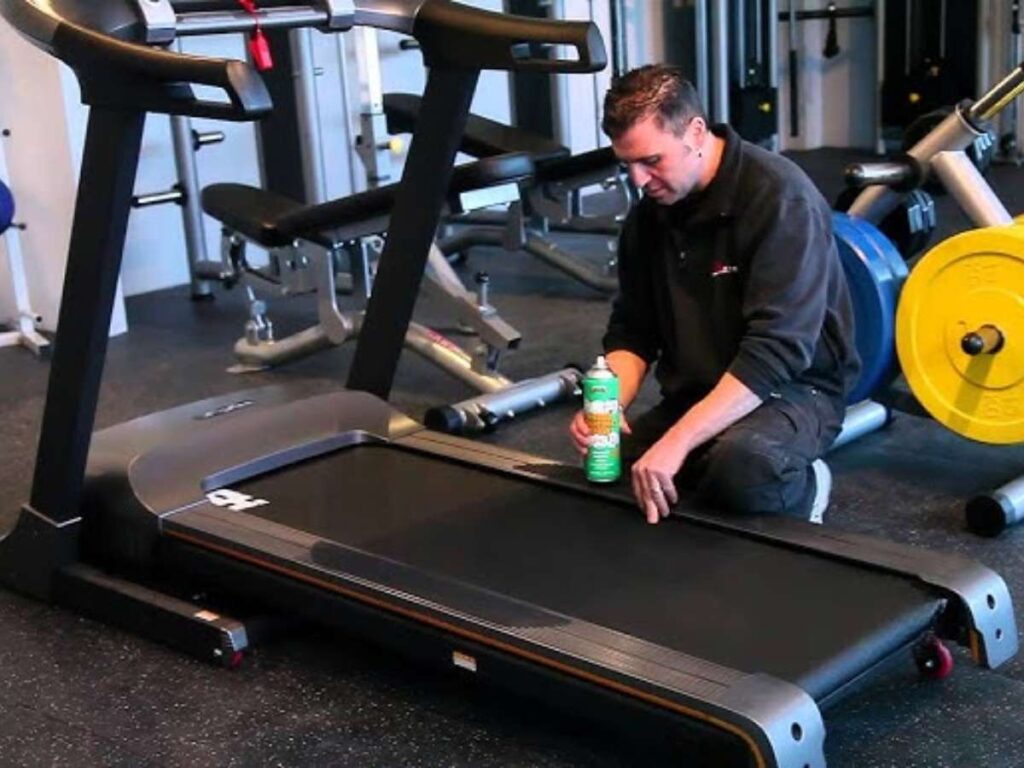
Looking to invest in cardio machines built to last? Contact us at YR Fitness, and we’ll help you choose durable equipment that keeps your facility running smoothly year after year.
8. How To Choose Rowing Machine vs Treadmill
Choosing between a rowing machine and a treadmill isn’t just about budget or floor space. I’ve made this decision before. More than once.
It’s never just about price or how much space is left on the gym floor.
It’s about choosing equipment your members will actually use. Equipment that supports real goals—and doesn’t sit unused in the corner. Here’s a deeper look at what really matters:
Know the Primary Training Focus
If your members are looking for full-body workouts with minimal joint stress, rowing machines are the smarter investment. They engage nearly 85% of the body’s muscles—legs, core, back, and arms—making them ideal for strength endurance and functional fitness. Plus, they’re lower-impact, which helps reduce injury risks for older members or those recovering from strain.
On the other hand, if your members prioritize calorie burn, cardiovascular endurance, or training for road races, treadmills shine. They simulate real-life running conditions, offer incline variability, and support walking to sprinting transitions seamlessly—perfect for cardio enthusiasts and athletes alike.
Look at Class Integration
What’s your gym programming style? Rowers are incredibly versatile in group training environments. They fit effortlessly into circuit training, HIIT, bootcamp, and metabolic conditioning classes. Their quick on-off usability allows for seamless station rotation, which is key in fast-paced group settings.
Treadmills, in contrast, are best used in longer-duration classes like treadmill-based cardio sessions or heart-rate training blocks. They’re less suited for rapid transitions but excel in guided runs or steady-state cardio formats where members remain at the station longer.
Consider Maintenance Time and Costs
Rowing machines are mechanically simpler. They generally require light maintenance like regular wipe-downs and occasional chain lubrication. If a part fails, it’s usually inexpensive and quick to fix.
Treadmills, however, involve motors, belts, sensors, and screens—all of which require regular inspection. Belts may need realignment or replacement. Dust buildup in motors can cause breakdowns. Maintenance costs add up faster, and downtime can be longer, which may frustrate members during peak hours.
Ready to choose the right cardio equipment for your gym’s needs? Talk to our team at YR Fitness and let’s find the perfect fit that keeps your members engaged and your business running strong.
Conclusion
I was once where you are—unsure, overwhelmed, trying to make the “right” decision.
Now, after years of running my gym, I know what to look for. And now you do too. Rowers and treadmills, each has strengths.
Don’t wait to make your gym better.
YR Fitness is ready to help. Whether you need guidance, quotes, or equipment—we’re here.
Contact us today and take that first step!
Related articles:



